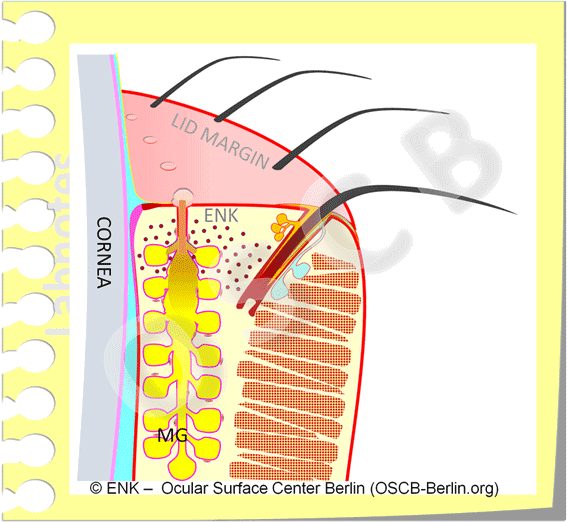Surgical Duct Probing
Duct probing is a surgical technique that requires considerable skill and is thus considered as a third line treatment of otherwise therapy-resistant Meibomian gland obstructions by inserting a metal instrument into the glands to improve gland structure and function mechanically.
Duct probing uses a metal probe for mechanical opening of gland obstructions
Probing of the Meibomian glands is a surgical therapeutic option for the removal of stubborn blockages in the glands
Surgical duct probing was developed by Steven Maskin for direct mechanical opening of gland obstructions.
Since this technique requires considerable surgical skill it is considered as a third line treatment when previous second line device-based treatments such as automated vectored thermopulsation (VTP) with the Lipiflow device or light therapies such as intense pulsed light (IPL) and low level color light therapy (LLLT) were not sufficiently successful.
Probing uses a thin metal instrument that resembles a somewhat blunt needle. Its diameter is similar to the diameter of the gland orifice at the posterior lid margin, which is about 0,1 millimeters (100 micrometers). The metal probe is available in different length in the range of some millimeters.
After repeated topical anesthesia by eye drops and/ or ointments, the metal probe is inserted through the orifice into the central duct of a Meibomian gland (please see animated image) and then carefully pushed forward until a resistance is noticed and overcome to re-open the duct.
Gland obstructions may not only be located at the orifice but also deeper obstructions are reported to occur and can be overcome by a noticeable tissue response (Steven Maskin personal information). Therefore it may be necessary to insert the probe for a certain depth if opening of the orifice alone was not sufficient to release an obstruction.
Subsequently the re-opened glands are manually expressed to completely remove the accumulated secretum. Sometimes the stored secretum may flow out freely as soon as the obstruction is opened. In order to improve the accuracy and safety of the technique, a refinement was introduced that uses meibography guided probing. Thereby it may be easier to control the probe position relative to and inside the glands.
Duct probing has an inherent risk of tissue wounding
Probing the meibomian glands carries an inherent risk of tissue injury, e.g. with minor bleeding
Mechanical introduction of a needle-like metal instrument into the small and delicate Meibomian gland ducts certainly has an inherent risk of tissue wounding as suggested by the histologic gland structure.
This may not be very important in clinical routine, as respective studies typically report no or only minor adverse events such as minor hemorrhage that is self-resolving (please see animated image).
In a number of studies duct probing is described as a safe and effective third line treatment for otherwise therapy resistant severe obstructive MGD if sufficient care and surgical skill are applied.


